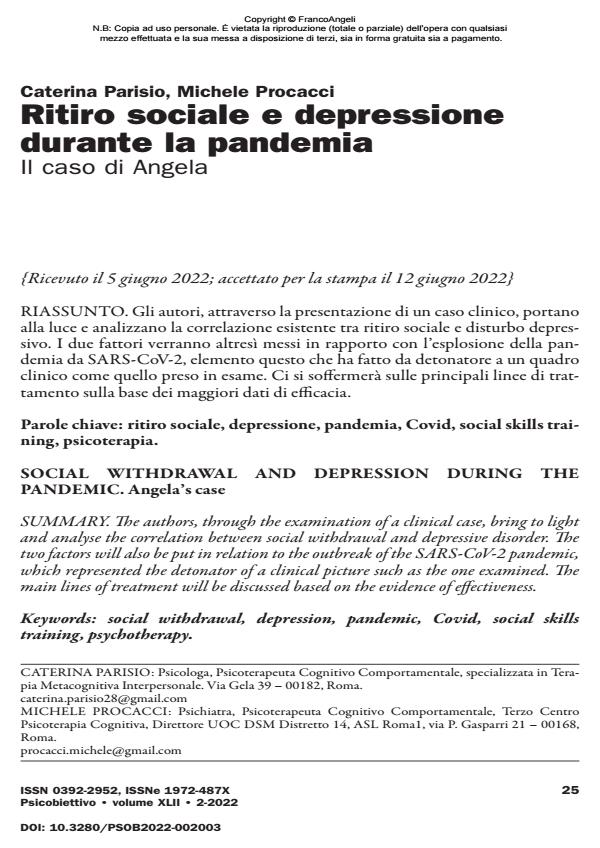Ritiro sociale e depressione durante la pandemia. Il caso di Angela
Titolo Rivista PSICOBIETTIVO
Autori/Curatori Caterina Parisio, Michele Procacci
Anno di pubblicazione 2022 Fascicolo 2022/2
Lingua Italiano Numero pagine 12 P. 25-36 Dimensione file 640 KB
DOI 10.3280/PSOB2022-002003
Il DOI è il codice a barre della proprietà intellettuale: per saperne di più
clicca qui
Qui sotto puoi vedere in anteprima la prima pagina di questo articolo.
Se questo articolo ti interessa, lo puoi acquistare (e scaricare in formato pdf) seguendo le facili indicazioni per acquistare il download credit. Acquista Download Credits per scaricare questo Articolo in formato PDF

FrancoAngeli è membro della Publishers International Linking Association, Inc (PILA)associazione indipendente e non profit per facilitare (attraverso i servizi tecnologici implementati da CrossRef.org) l’accesso degli studiosi ai contenuti digitali nelle pubblicazioni professionali e scientifiche
Gli autori, attraverso la presentazione di un caso clinico, portano alla luce e analizzano la correlazione esistente tra ritiro sociale e disturbo depressivo. I due fattori verranno altresi messi in rapporto con l’esplosione della pandemia da SARS-CoV-2, elemento questo che ha fatto da detonatore a un quadro clinico come quello preso in esame. Ci si soffermera sulle principali linee di trattamento sulla base dei maggiori dati di efficacia.
Parole chiave:ritiro sociale, depressione, pandemia, Covid, social skills training, psicoterapia.
Caterina Parisio, Michele Procacci, Ritiro sociale e depressione durante la pandemia. Il caso di Angela in "PSICOBIETTIVO" 2/2022, pp 25-36, DOI: 10.3280/PSOB2022-002003